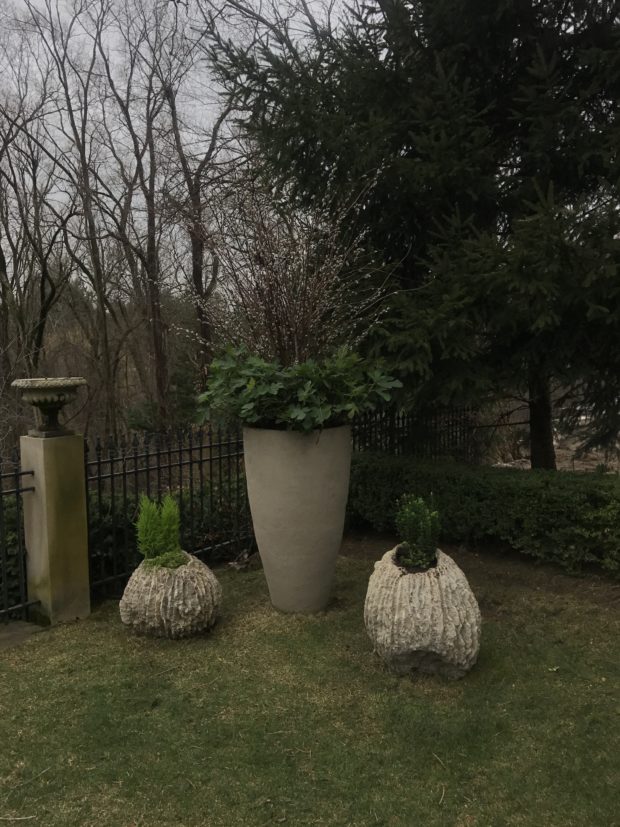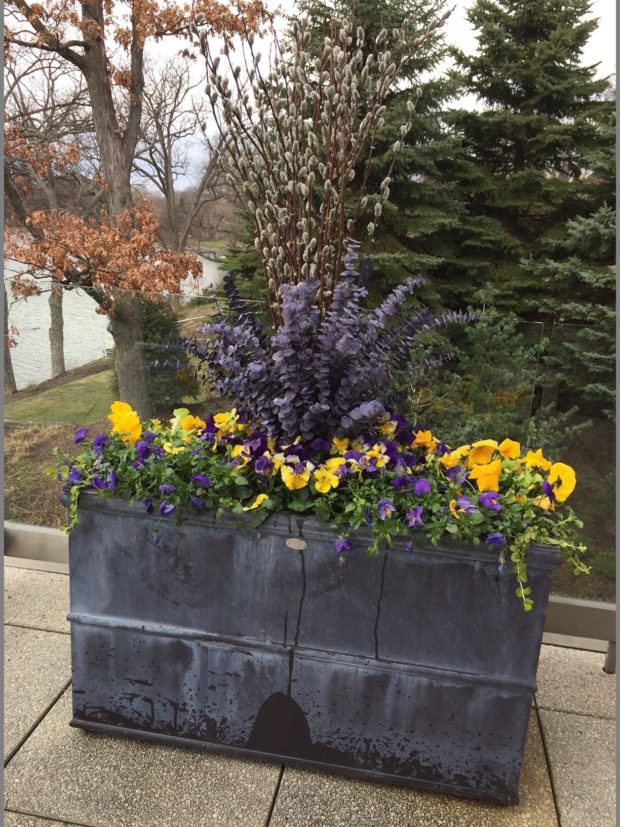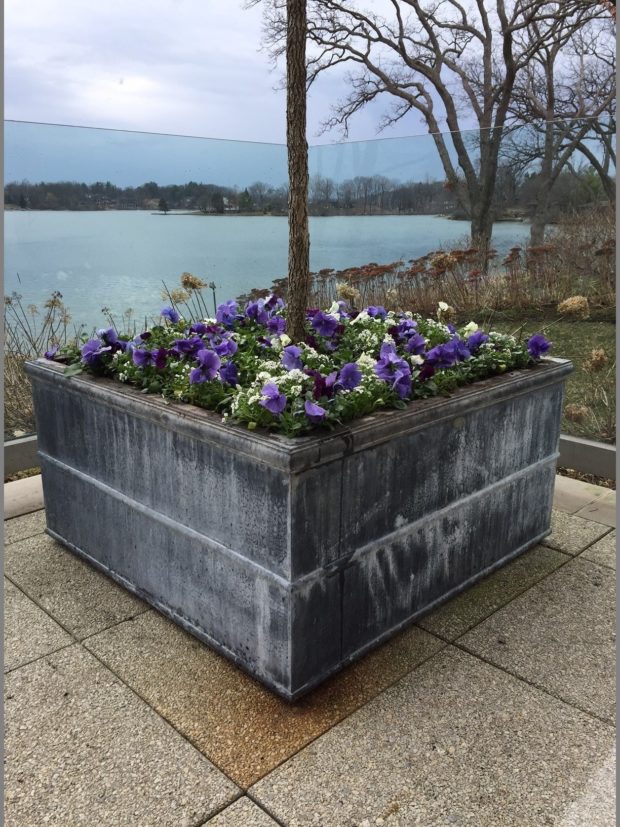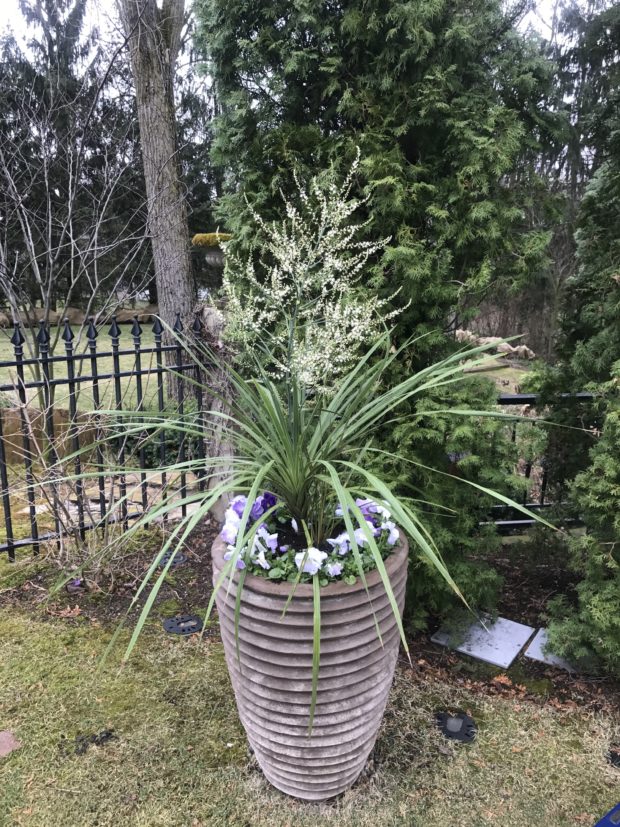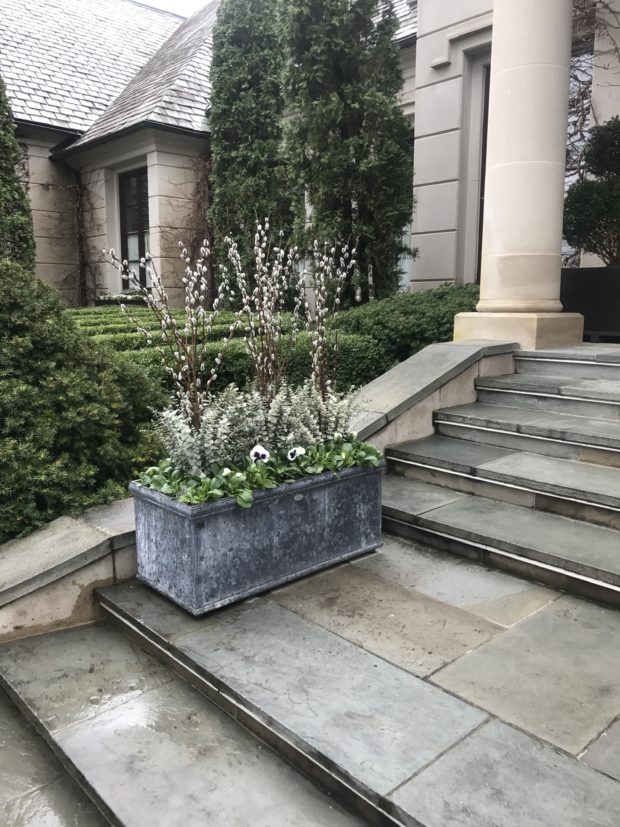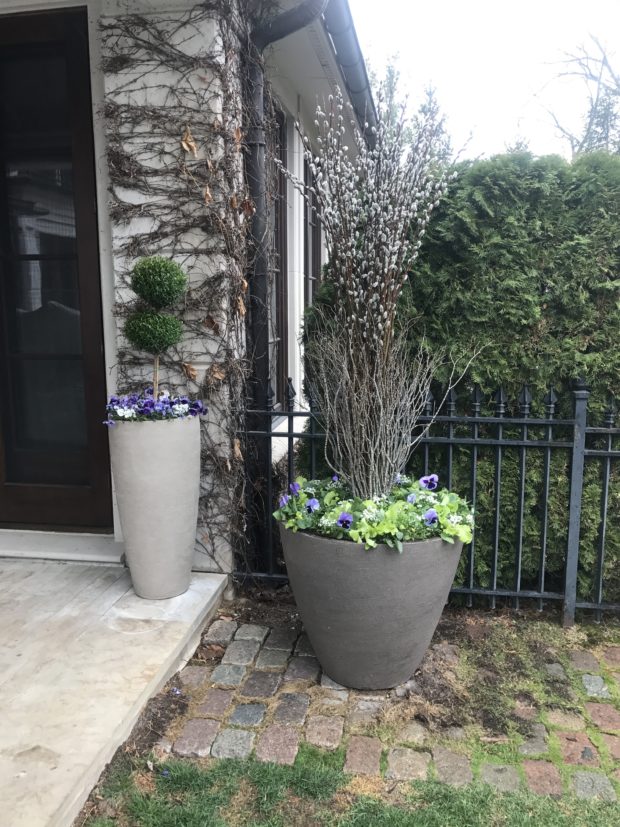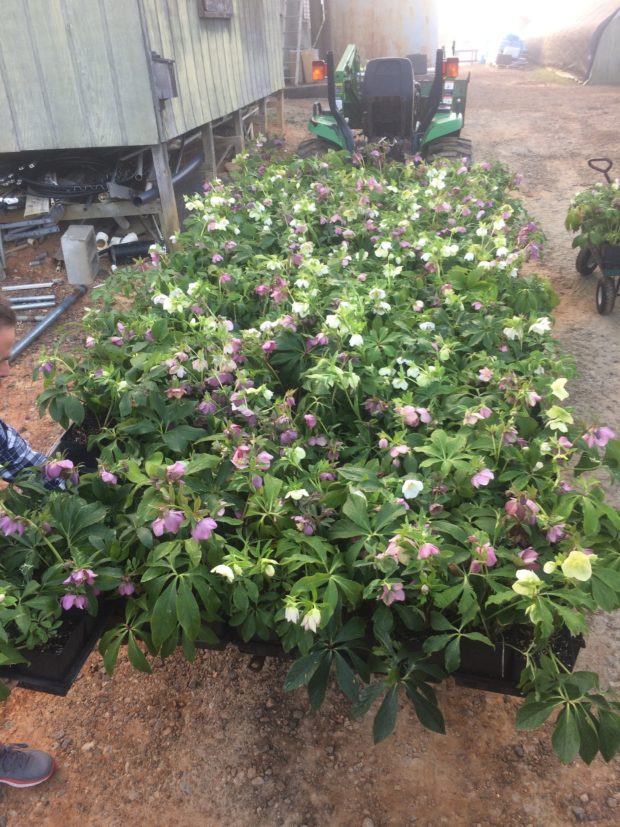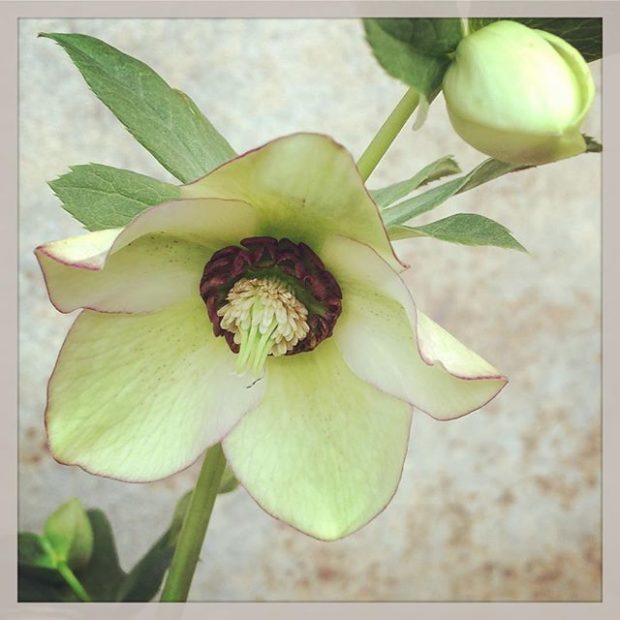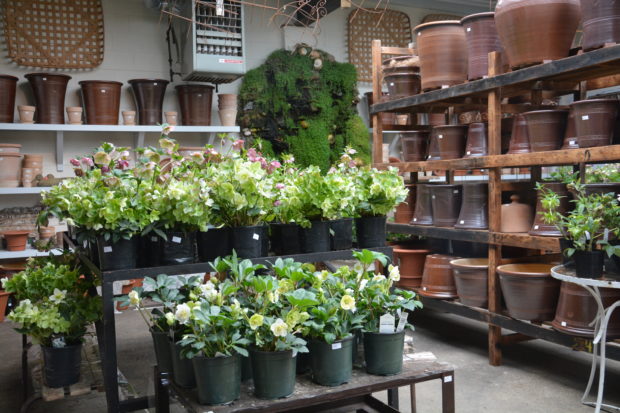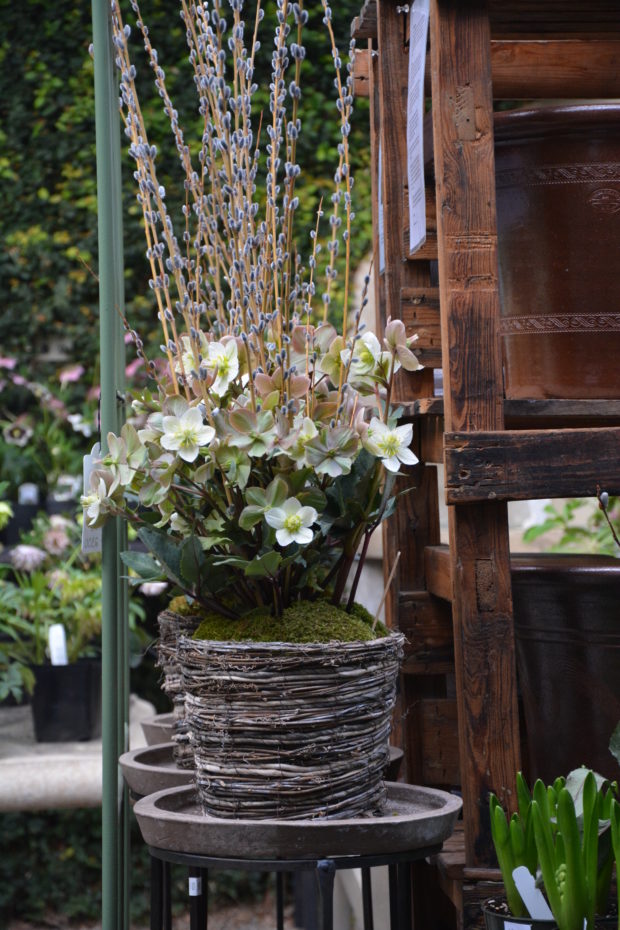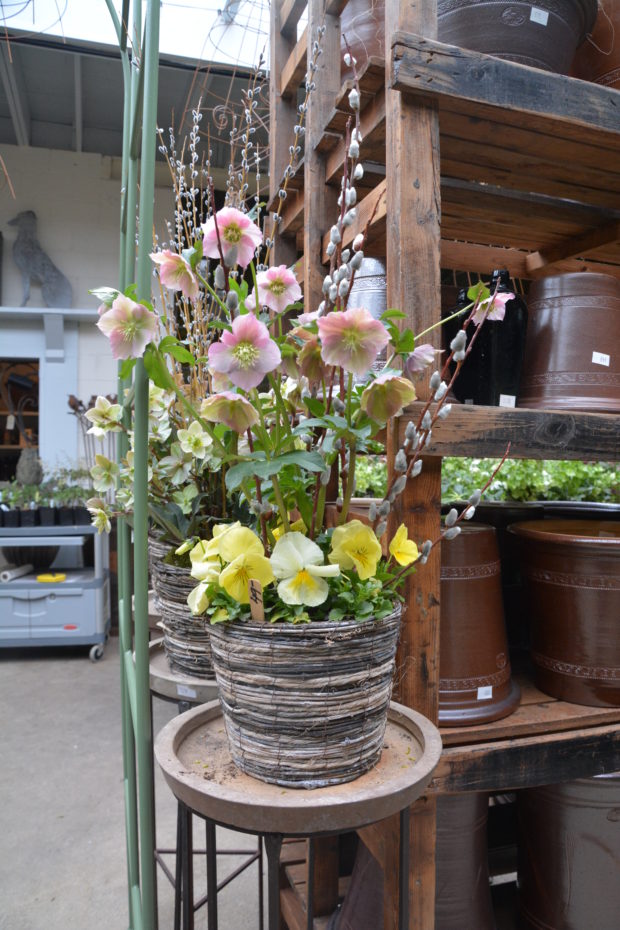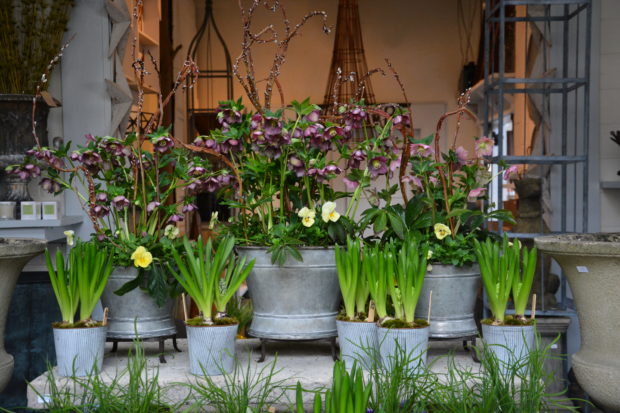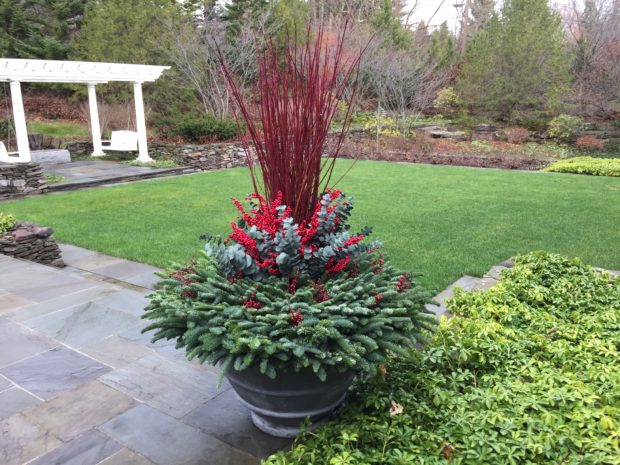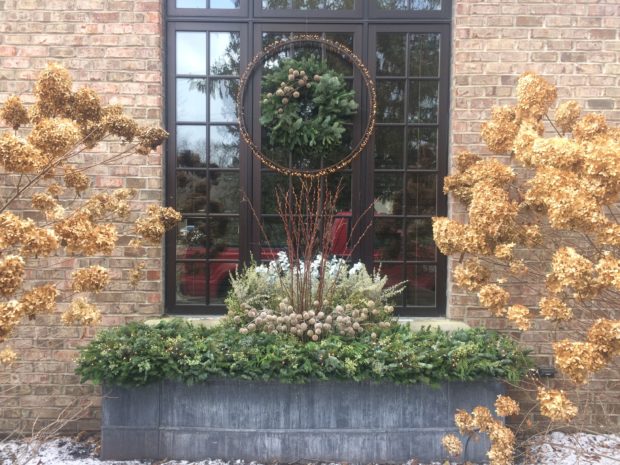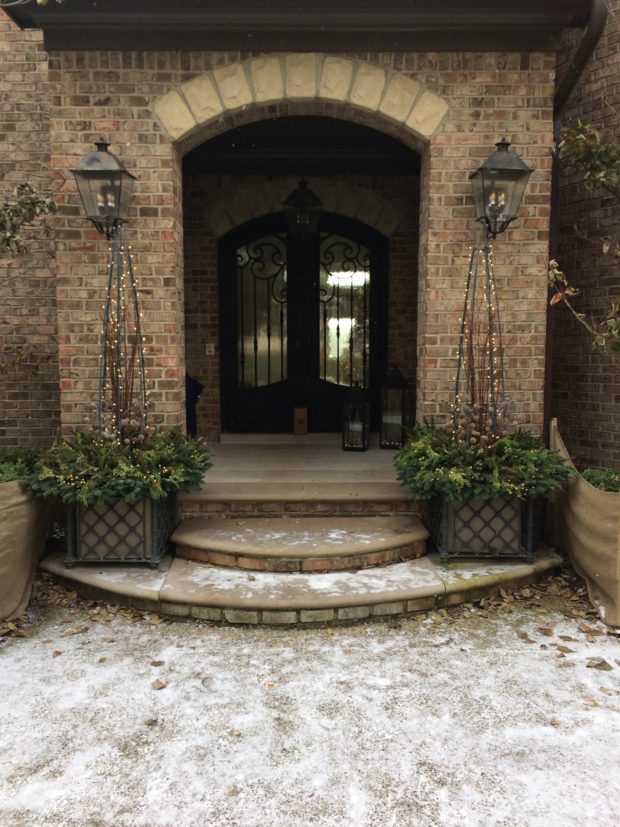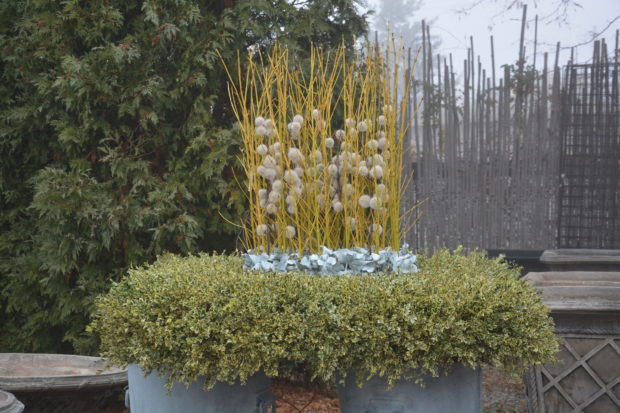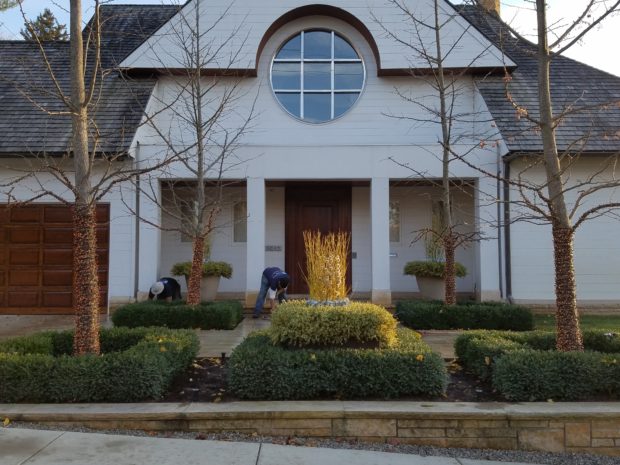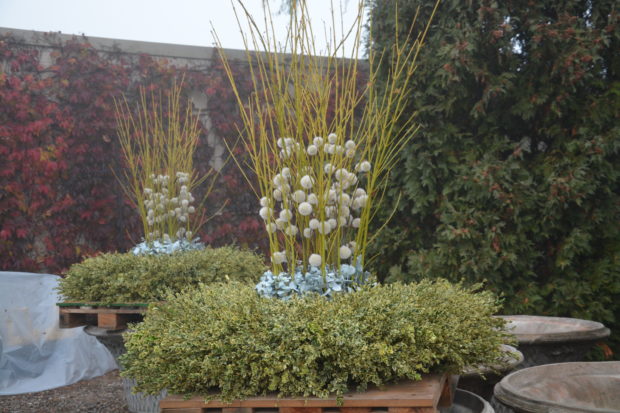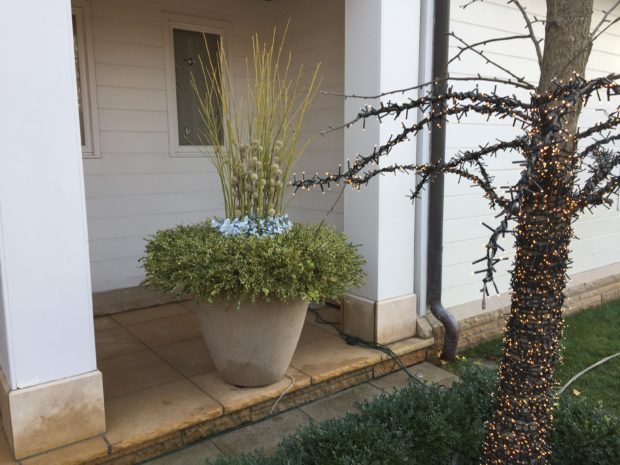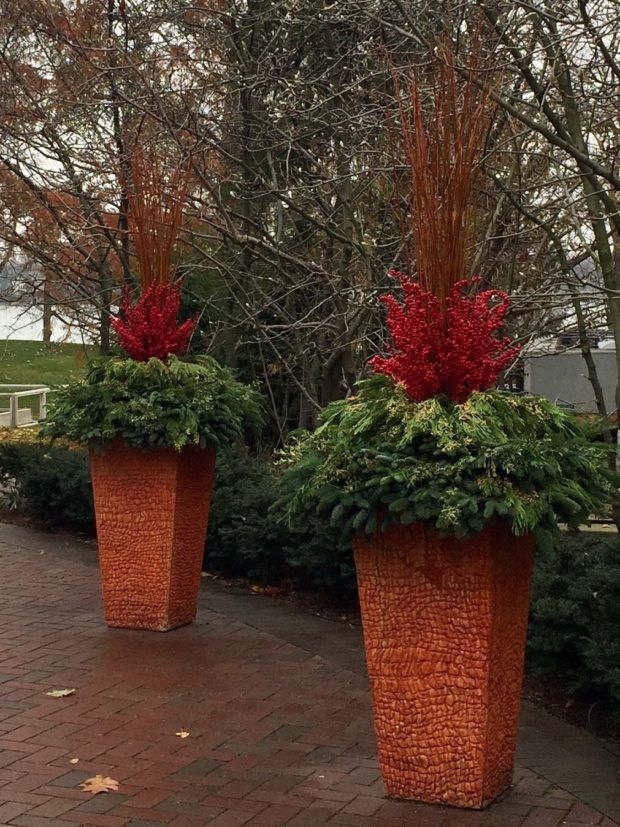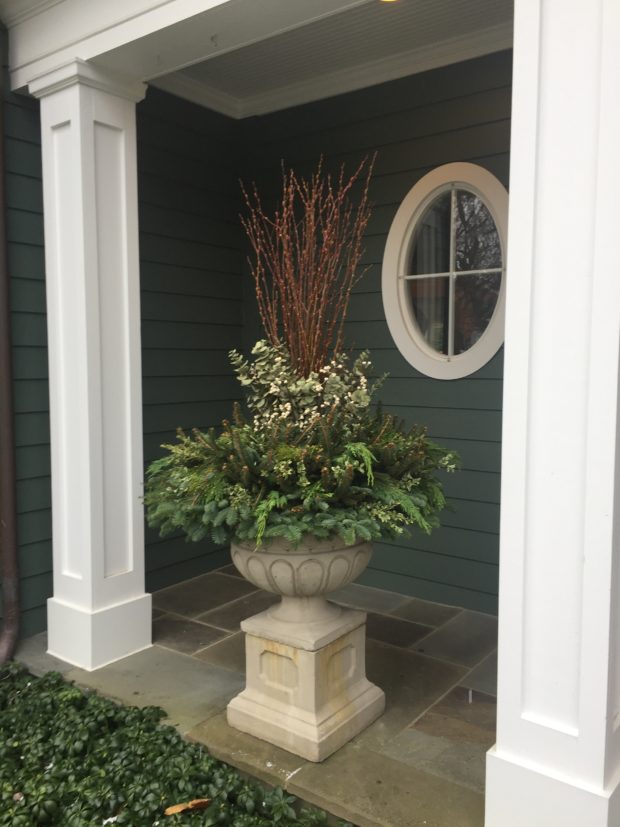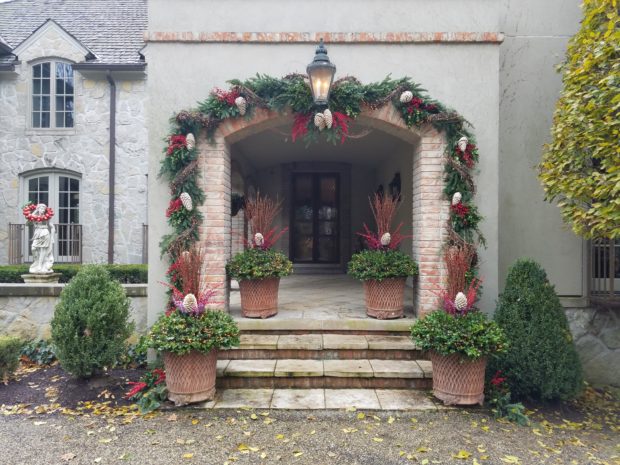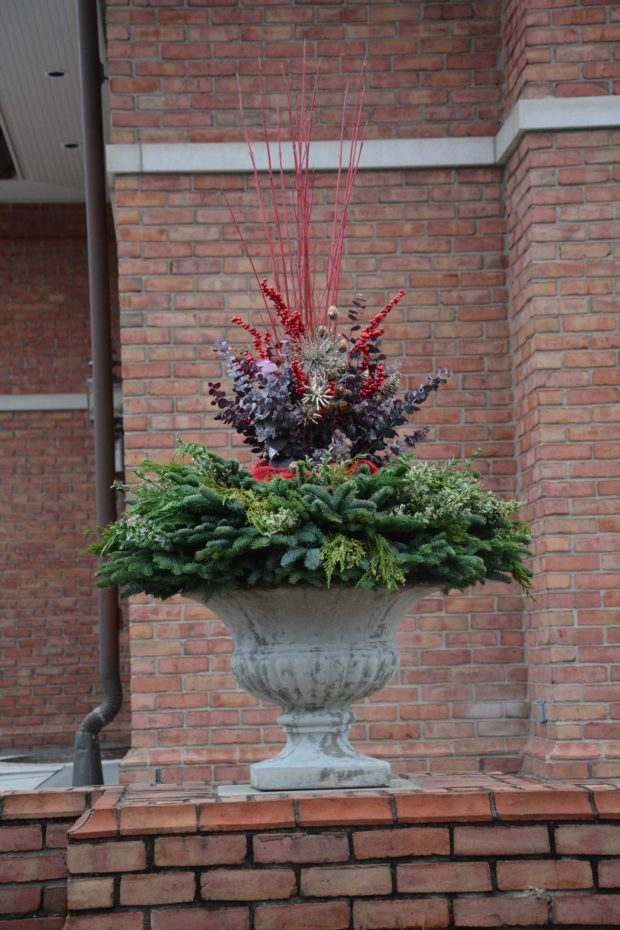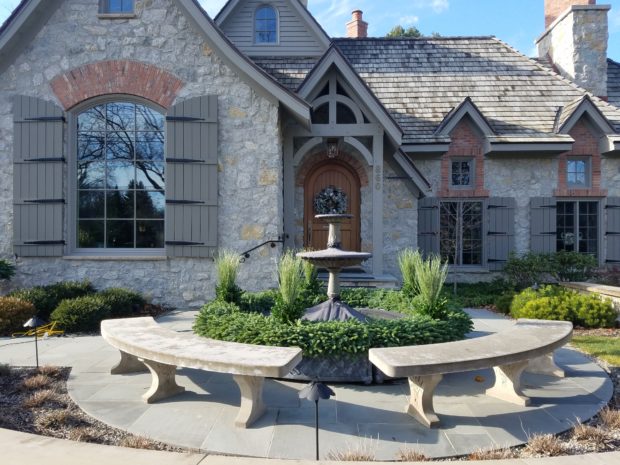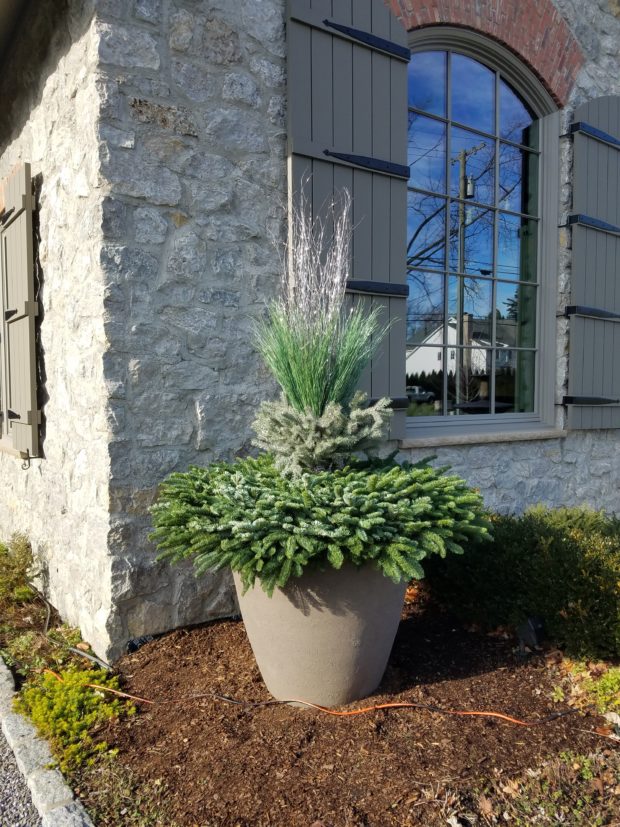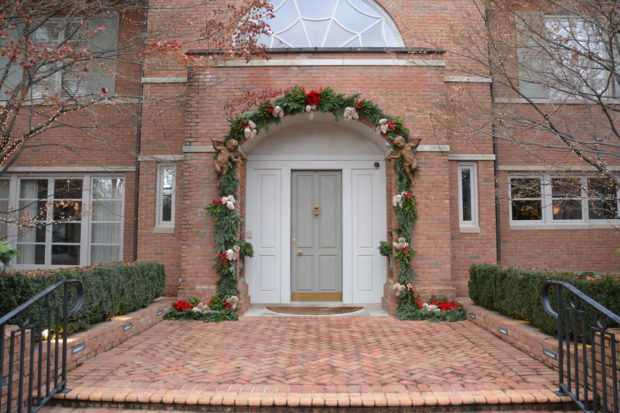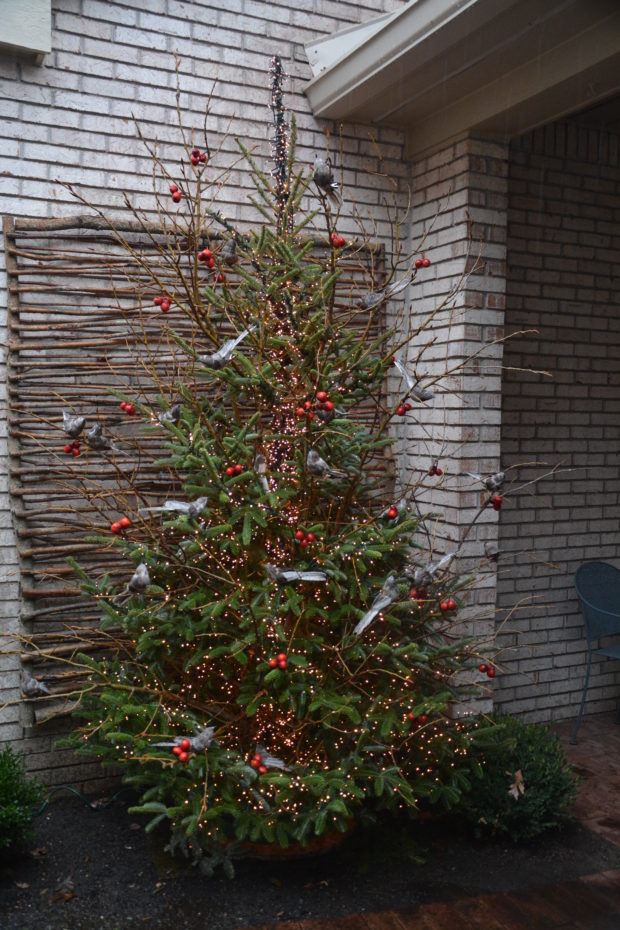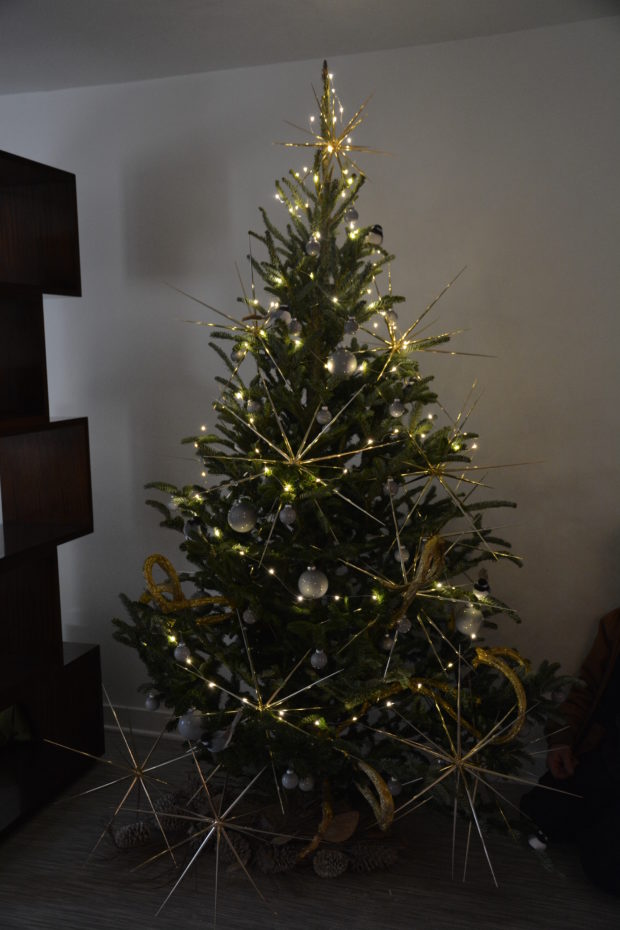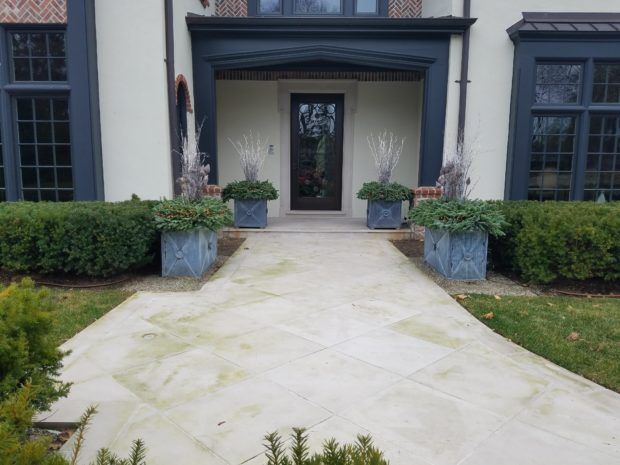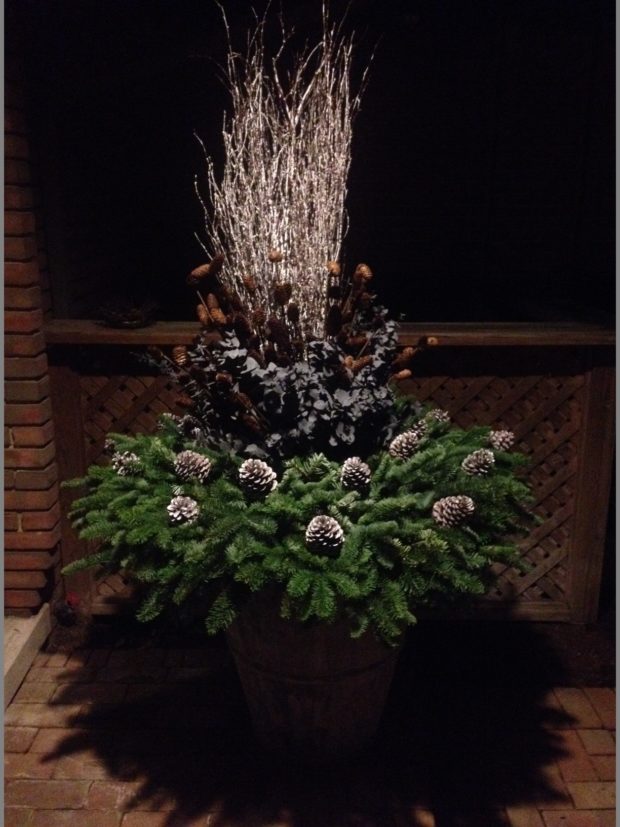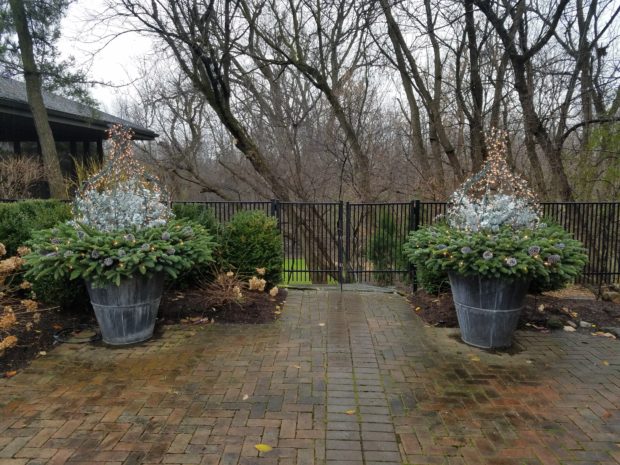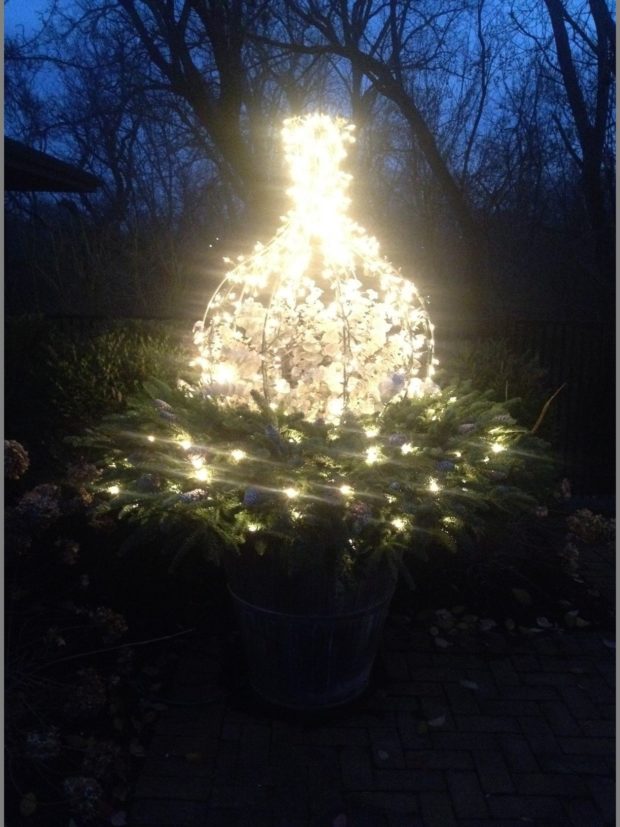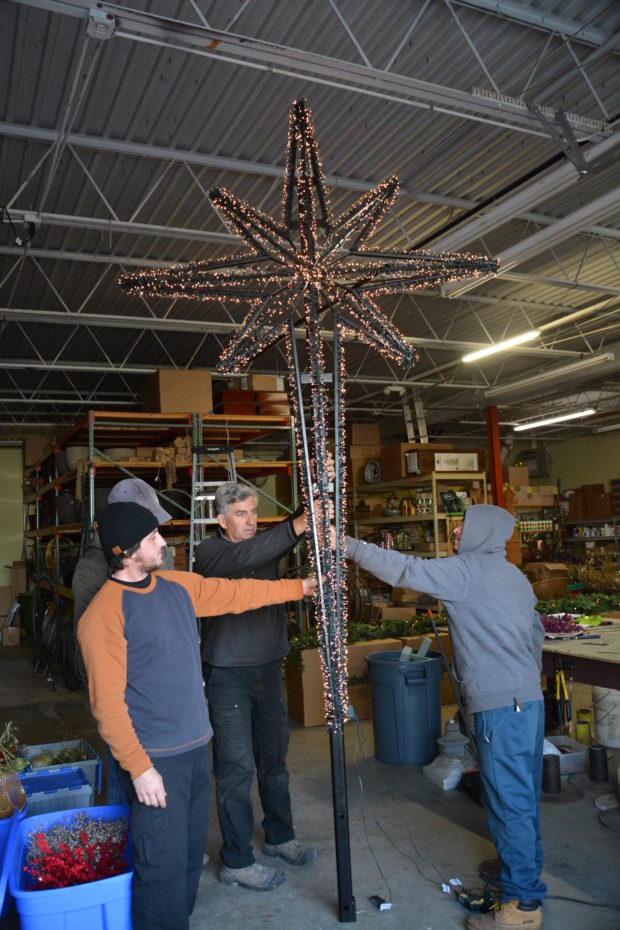 I did plant my first container project last week for a client who had an event, and was willing to take the risks associated with planting in cold soil. Planting for an event means I use the largest and most established plant material I can, in hopes that the shock of cold soil and cold nights will bother them less than small plants. My rationale could be entirely without merit – and just a feeble effort to make myself feel better about shocking these tropical plants with unhappy conditions. But soon enough the nights will be warm enough to plant. At home, I like to get my containers out early, fill them with fresh soil, and look at them for a while. We had a new and improved soil mix blended for us in March that has more compost, leaf mold, and ground bark. I am hoping this soil will retain moisture better, so the pots we plant do not have to have to be monitored so closely for water. When the soil in my pots is plenty warm, it is time to plant.
I did plant my first container project last week for a client who had an event, and was willing to take the risks associated with planting in cold soil. Planting for an event means I use the largest and most established plant material I can, in hopes that the shock of cold soil and cold nights will bother them less than small plants. My rationale could be entirely without merit – and just a feeble effort to make myself feel better about shocking these tropical plants with unhappy conditions. But soon enough the nights will be warm enough to plant. At home, I like to get my containers out early, fill them with fresh soil, and look at them for a while. We had a new and improved soil mix blended for us in March that has more compost, leaf mold, and ground bark. I am hoping this soil will retain moisture better, so the pots we plant do not have to have to be monitored so closely for water. When the soil in my pots is plenty warm, it is time to plant.
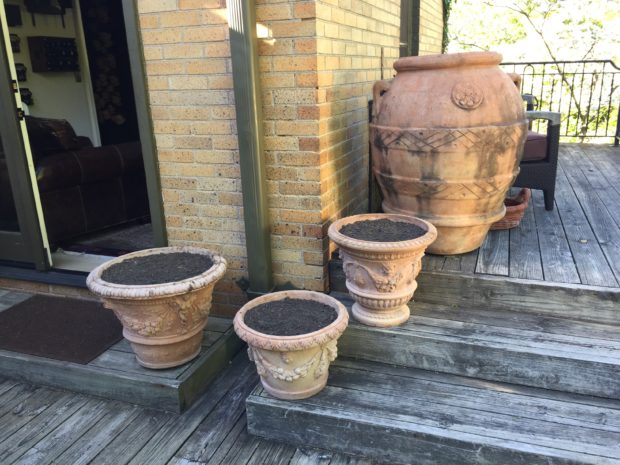 What will you plant? The process of deciding what to plant is not logical or linear, but certain issues are influential. The light conditions rank right up there. Geraniums do not like a shady location, and white non stop begonias will burn and fail in hot sunny locations. This issue is fairly easy to resolve. Most plants have care tags in them. Sun means sun. Shade really means partial or dappled shade. If you have deep shade, shop the house plant department. Locations that are part sun and part shade can be trickier. Those white begonias may tolerate some morning sun, and want more protection from noon on. Caladiums will tolerate a lot of sun if they have sufficient water. 6 hours of sun might satisfy those plants needing full sun. Shop at a nursery if you want help selecting the proper plants for your locations. Most nurseries in my area have people who are expert in the light and water of seasonal plants.
What will you plant? The process of deciding what to plant is not logical or linear, but certain issues are influential. The light conditions rank right up there. Geraniums do not like a shady location, and white non stop begonias will burn and fail in hot sunny locations. This issue is fairly easy to resolve. Most plants have care tags in them. Sun means sun. Shade really means partial or dappled shade. If you have deep shade, shop the house plant department. Locations that are part sun and part shade can be trickier. Those white begonias may tolerate some morning sun, and want more protection from noon on. Caladiums will tolerate a lot of sun if they have sufficient water. 6 hours of sun might satisfy those plants needing full sun. Shop at a nursery if you want help selecting the proper plants for your locations. Most nurseries in my area have people who are expert in the light and water of seasonal plants.
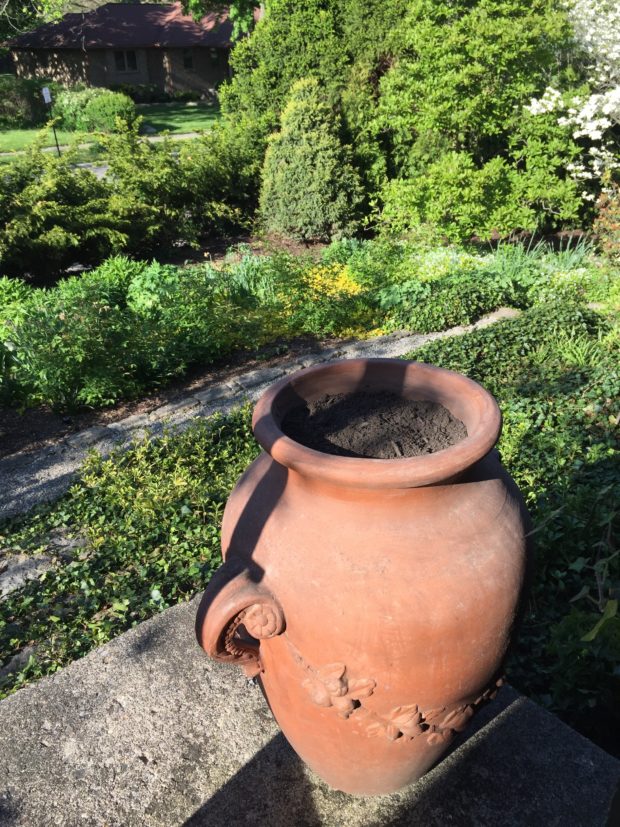 Once the science has been satisfied, there are plenty of other decisions to be made. The first is to understand your objective in planting the pot in the first place. If you want the pots on your front porch to be seen from the sidewalk, then planting large flowered plants, or vines in a pale or bright color will help them to read successfully from afar. If you want them to screen an untoward view, plant your pots tall, and maybe plant multiple pots in the same location. If you want a pot to anchor a garden or landscape bed, plant large pots big and wide. Be clear in the planting that the container is a focal point around which other elements will revolve. If you like small, subtle, and or fragrant flowers, plant them near where you will be able to sit to enjoy them. If your idea is to stop any visitor in their tracks, then plant annuals that bloom lavishly, or whose foliage is striking
Once the science has been satisfied, there are plenty of other decisions to be made. The first is to understand your objective in planting the pot in the first place. If you want the pots on your front porch to be seen from the sidewalk, then planting large flowered plants, or vines in a pale or bright color will help them to read successfully from afar. If you want them to screen an untoward view, plant your pots tall, and maybe plant multiple pots in the same location. If you want a pot to anchor a garden or landscape bed, plant large pots big and wide. Be clear in the planting that the container is a focal point around which other elements will revolve. If you like small, subtle, and or fragrant flowers, plant them near where you will be able to sit to enjoy them. If your idea is to stop any visitor in their tracks, then plant annuals that bloom lavishly, or whose foliage is striking
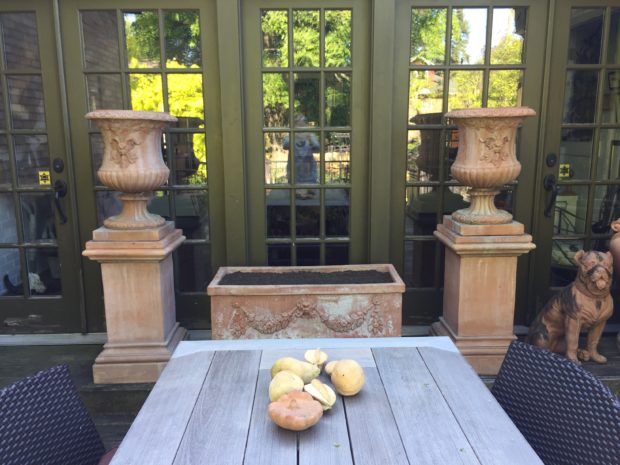 Annual container plants have an attitude. Some are dramatically formal. Others are free wheeling. Others still are modest in form and flower. That plantatude factor might influence what you choose. Large flowered tropical plants have an exotic and otherworldly aura about them. Dahlias, zonal geraniums, cannas and mandevilleas are tropical plants with big showy flowers. ooo la la. Some annuals plants with dramatic foliage include alocasias, calocasias, agaves and cannas. Even small succulent plants can be dramatic, as their forms are fascinating. Coleus foliage is not that large, but the color of the leaves can be very dramatic. If coleus are pinched regularly, they attain great size and interesting shapes. If the drama of it all makes you happy to be gardening in containers, then go for it. If the drama needs a formal and contemporary aspect, then fill your pot with lots of the same plant, in the same color. In a shady spot, a Janet Craig dracaena (large glossy chartreuse leaves) underplanted with creeping jenny (dimuitive chartreuse leaves that trail downwards) and lime selaginella (a creeping velvet textured club moss) in a container would make a very dramatic statement indeed. A container of a single color makes the forms and textures of the plants prominent. All of the drama of tropical plants comes naturally in my zone. A pot full of dahlias grown in a tropical zone might blend into the landscape, and would not have the drama that I associate with exotic plants.
Annual container plants have an attitude. Some are dramatically formal. Others are free wheeling. Others still are modest in form and flower. That plantatude factor might influence what you choose. Large flowered tropical plants have an exotic and otherworldly aura about them. Dahlias, zonal geraniums, cannas and mandevilleas are tropical plants with big showy flowers. ooo la la. Some annuals plants with dramatic foliage include alocasias, calocasias, agaves and cannas. Even small succulent plants can be dramatic, as their forms are fascinating. Coleus foliage is not that large, but the color of the leaves can be very dramatic. If coleus are pinched regularly, they attain great size and interesting shapes. If the drama of it all makes you happy to be gardening in containers, then go for it. If the drama needs a formal and contemporary aspect, then fill your pot with lots of the same plant, in the same color. In a shady spot, a Janet Craig dracaena (large glossy chartreuse leaves) underplanted with creeping jenny (dimuitive chartreuse leaves that trail downwards) and lime selaginella (a creeping velvet textured club moss) in a container would make a very dramatic statement indeed. A container of a single color makes the forms and textures of the plants prominent. All of the drama of tropical plants comes naturally in my zone. A pot full of dahlias grown in a tropical zone might blend into the landscape, and would not have the drama that I associate with exotic plants.
 If something lighter and more subtle is more appealing, choose seasonal plants have forms and flowers that have the look of the perennial garden. There are tropical forms (meaning non-hardy) of lavender – as in French or Spanish lavender. The annual blue salvia is quite similar in color and form to the hardy types. Marguerites, or Boston daisies bring the look of a shasta daisy to a container. Annual phlox flowers look much like phlox subulata, or moss phlox. Angelonia is a graceful stand in for veronica, or any other spike forming perennial. So why not plant the perennials in the containers? Perennials have a very limited and specific bloom time. If cut back, many perennials will rebloom, but the down time is significant. Annuals that have that perennial aura, with some exceptions, tend to have a more relaxed habit of growth. That more cottage like farm and garden look is easy on the eye. What says summer breeze in our zone better than daisies? Getting sunflowers to work in a formal or contemporary container would be tough. Sunflowers look like they belong in the vegetable garden, no matter how they are placed. They have an aura.
If something lighter and more subtle is more appealing, choose seasonal plants have forms and flowers that have the look of the perennial garden. There are tropical forms (meaning non-hardy) of lavender – as in French or Spanish lavender. The annual blue salvia is quite similar in color and form to the hardy types. Marguerites, or Boston daisies bring the look of a shasta daisy to a container. Annual phlox flowers look much like phlox subulata, or moss phlox. Angelonia is a graceful stand in for veronica, or any other spike forming perennial. So why not plant the perennials in the containers? Perennials have a very limited and specific bloom time. If cut back, many perennials will rebloom, but the down time is significant. Annuals that have that perennial aura, with some exceptions, tend to have a more relaxed habit of growth. That more cottage like farm and garden look is easy on the eye. What says summer breeze in our zone better than daisies? Getting sunflowers to work in a formal or contemporary container would be tough. Sunflowers look like they belong in the vegetable garden, no matter how they are placed. They have an aura.
 The arrangement of the plants in a given container creates a distinctive mood. Symmetrical arrangements are more formal. I usually plant my pots symmetrically, as my pots are formal and classic/traditional Italian terra cotta. That style pot works well with my 1930’s house. The pots are a big part of the composition. What do your pots ask for? Asymmetrical arrangements of many types of plants is more garden like, and less fussy. Plantings of a single cultivar are the most formal, and also the most contemporary. Planting a stiff growing plant (like a dahlia) with an airy growing plant (like euphorbia diamond frost) relaxes the look. The relationships established by the color and form of one plant to its companions is part of why gardening in containers is so interesting
The arrangement of the plants in a given container creates a distinctive mood. Symmetrical arrangements are more formal. I usually plant my pots symmetrically, as my pots are formal and classic/traditional Italian terra cotta. That style pot works well with my 1930’s house. The pots are a big part of the composition. What do your pots ask for? Asymmetrical arrangements of many types of plants is more garden like, and less fussy. Plantings of a single cultivar are the most formal, and also the most contemporary. Planting a stiff growing plant (like a dahlia) with an airy growing plant (like euphorbia diamond frost) relaxes the look. The relationships established by the color and form of one plant to its companions is part of why gardening in containers is so interesting
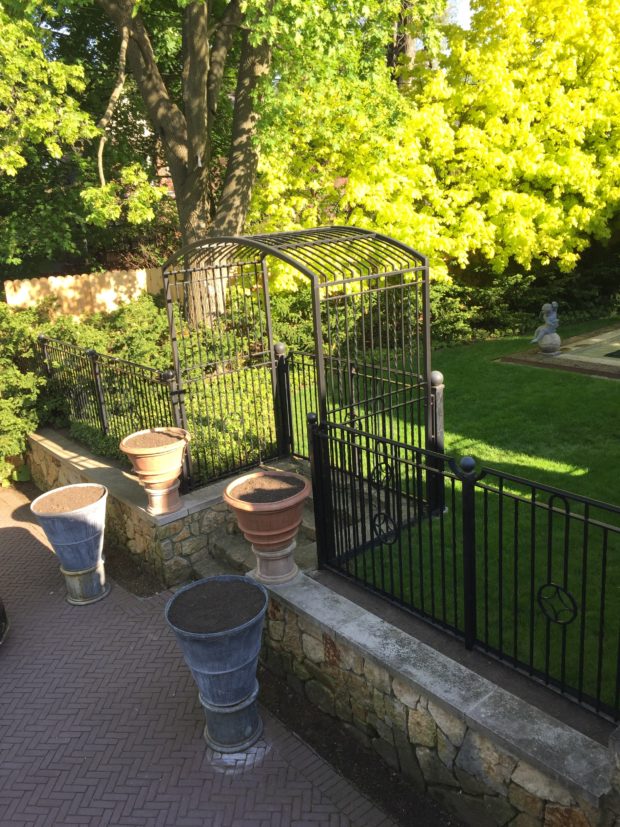 Of course, color plays a big part in the selection of plants. Some colors are appealing; others not so much. Pink and orange together is loud, even rowdy. Gray and white is subtle. All white, and all green-so chic. Purple and red looks like royalty. Yellow and white is sunny. This is my take on color combinations. Everyone sees color differently. How you see color, texture, mass and form should be evident in what plants you choose for your containers. What will I plant? I have no idea…yet.
Of course, color plays a big part in the selection of plants. Some colors are appealing; others not so much. Pink and orange together is loud, even rowdy. Gray and white is subtle. All white, and all green-so chic. Purple and red looks like royalty. Yellow and white is sunny. This is my take on color combinations. Everyone sees color differently. How you see color, texture, mass and form should be evident in what plants you choose for your containers. What will I plant? I have no idea…yet.

